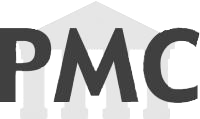
Research Article
Gain-of-function mutations in interleukin-7 receptor-α (IL7R) in childhood acute lymphoblastic leukemias
Chen Shochat, Noa Tal, Obul R. Bandapalli, Chiara Palmi, Ithamar Ganmore, Geertruy te Kronnie, Gunnar Cario, Giovanni Cazzaniga, Andreas E. Kulozik, Martin Stanulla, Martin Schrappe, Andrea Biondi, Giuseppe Basso, Dani Bercovich, Martina U. Muckenthaler, Shai Izraeli
Published:
DOI:
10.1084/jem.20110580
License:
© 2011 Shochat et al.2011This article is distributed under the terms of an Attribution–Noncommercial–Share Alike–No Mirror Sites license for the first six months after the publication date (see http://www.rupress.org/terms). After six months it is available under a Creative Commons License (Attribution–Noncommercial–Share Alike 3.0 Unported license, as described at http://creativecommons.org/licenses/by-nc-sa/3.0/).
Abstract
IL7R-activating mutations identified in B-ALL and T-ALL patient leukemic cells facilitate cytokine-independent growth.Interleukin-7 receptor α (IL7R) is required for normal lymphoid development. Loss-of-function mutations in this gene cause autosomal recessive severe combined immune deficiency. Here, we describe somatic gain-of-function mutations in IL7R in pediatric B and T acute lymphoblastic leukemias. The mutations cause either a serine-to-cysteine substitution at amino acid 185 in the extracellular domain (4 patients) or in-frame insertions and deletions in the transmembrane domain (35 patients). In B cell precursor leukemias, the mutations were associated with the aberrant expression of cytokine receptor-like factor 2 (CRLF2), and the mutant IL-7R proteins formed a functional receptor with CRLF2 for thymic stromal lymphopoietin (TSLP). Biochemical and functional assays reveal that these IL7R mutations are activating mutations conferring cytokine-independent growth of progenitor lymphoid cells. A cysteine, included in all but three of the mutated IL-7R alleles, is essential for the constitutive activation of the receptor. This is the first demonstration of gain-of-function mutations of IL7R. Our current and recent observations of mutations in IL7R and CRLF2, respectively suggest that the addition of cysteine to the juxtamembranous domains is a general mechanism for mutational activation of type I cytokine receptors in leukemia.


